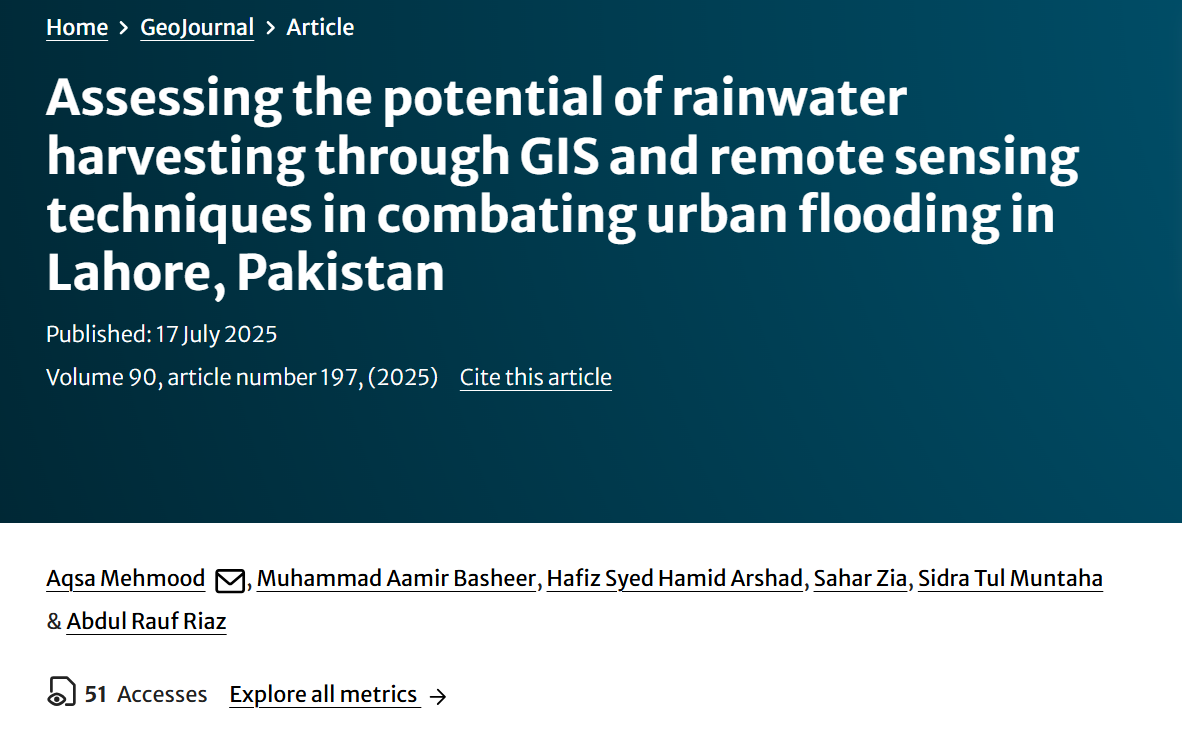Assessing the potential of rainwater harvesting through GIS and remote sensing techniques in combating urban flooding in Lahore, Pakistan
Urban flooding has become a critical issue in cities, which presents a serious threat to infrastructure owing to changes in land use and land cover. The cities are increasingly vulnerable to flooding due to intense rainfall and inadequate management practices. In response to these challenges, water harvesting is recognized as a sustainable development approach to mitigate the impacts of urban flooding. However, the implementation of rainwater harvesting within urban environment involves a comprehensive analysis of potential sites. This study employs the Analytic Hierarchy Process (AHP) in combination with geographic information systems and remote sensing techniques to identify suitable sites for rainwater harvesting in Lahore, Pakistan. The selection of optimal sites is based on the multiple determinants such as DEM, slope, LULC, drainage network, ponding sites, harvesting wells, recharge wells, rainfall, distance to road network, and area under water. In urban settings, sites with a high risk of urban flooding exhibit high potential for rainwater harvesting. The application of AHP indicated that 34.31% of the area in Lahore is high flood risk zones, with 19.4% considered high risk and 18.48% at moderate risk. The findings indicate significant benefits of rainwater harvesting to confront flooding and water scarcity in urban areas. This study particularly emphasizes the importance of integrating nature-based methodologies for sustainable urban development and improving flood management strategies, such as the implementation of bioswales.
